If you’re new to the stock market or investing, you may not be familiar with terms like “Option Strategies” or “Option Trading Strategies.” But don’t fret, we’re here to help you out! When it comes to accumulating wealth over the long term, Trading Options, when done right, can be highly effective.
An Option is essentially a contract that gives investors the opportunity to buy or sell an underlying instrument, such as a stock or even an index, at a predetermined price within a specified period, in exchange for a premium paid by the buyer to the seller.
Bullish Option Trading Strategies
Exploring Bullish Option Trading Strategies:
1) Bull Call Spread

The Bull Call Spread is a powerful Option Trading Strategy found within the Debt Spreads category. If you’re looking to capitalize on a bullish outlook for a stock or ETF without assuming the risk of purchasing shares outright, the Bull Call Spread offers an appealing alternative.
While purchasing Call Options can be expensive and expose you to more risk than you’re comfortable with, the Bull Call Spread provides a solution. By incorporating both a long call option to express your bullish views and a short call option to offset some of that cost, you can effectively reduce your initial cost and risk.
This strategy involves purchasing one call option and simultaneously selling another call option with a lower cost and a higher strike price, both with the same expiration date. It’s regarded as one of the most effective option selling strategies available.
2) Bull Put Spread

When an options trader anticipates a moderate increase in the price of the underlying asset in the near future, they can employ the Bull Put Spread Option Trading Strategy. This strategy is typically categorized as a Credit Spread and, while not the most complex Option Trading Strategy, it involves the buying and selling of puts and calls which can be intricate.
In essence, this spread involves selling a put option and simultaneously buying a put option with a lower strike. The advantage lies in Theta decay, as the Short-Put Option will lose value at a faster rate compared to your Long-Put Option position.
Therefore, executing a Bull Put Position would be advantageous, as it gains value rapidly on a daily basis due to theta decay. This strategy is widely regarded as an excellent option buying strategy.
3) Bull Call Ratio Backspread

To execute this trade, a trader must exhibit a strong bullish outlook on the stock. Anything less than a robustly bullish stance will not suffice. It’s noteworthy that, paradoxically, the primary risk in a Bull Call Ratio Backspread lies in the direction the trader anticipates the trade to move.
Instead of simply buying Call Options, a more potent strategy to consider is the Bull Call Ratio Backspread. This involves selling one or more at-the-money or out-of-the-money calls, and concurrently purchasing two or three calls that are deeper in the money than the call that was sold. Regarded as one of the premier option selling strategies, this approach provides a more comprehensive and potentially lucrative way to capitalize on a bullish market stance.
4) Synthetic Call

The investor acquires and retains shares to initiate a Synthetic Call, also referred to as a Synthetic Long Call. In order to safeguard against a potential decline in the stock price, the investor simultaneously purchases an at-the-money put option on the identical stock.
Numerous astute investors perceive this strategy as akin to an insurance policy, providing protection against a substantial drop in the stock value during their ownership.
Bearish Option Trading Strategies
Following are the Bearish Option Trading Strategies-
5) Bear Call Spread
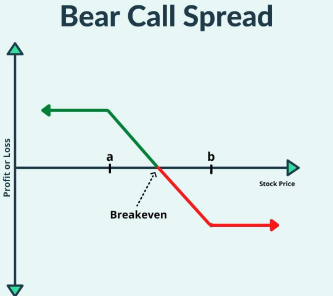
When a trader holds a largely bearish view of the market, they may opt for a double options trading strategy known as a Bear Call Spread. This approach involves selling a shorter-term call option while simultaneously purchasing a longer-term call option with the same underlying commodity and expiration date, but at a higher strike price. By earning a higher option premium on the call sold than the cost of the call purchased, one can secure a net profit.
6) Bear Put Spread
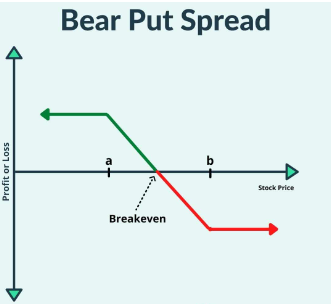
A trader or investor employs a Bear Put Spread when they anticipate a slight decline in the price of a security or asset. This strategy involves buying Put Options and selling an equal number of puts on the same asset with the same expiration date at a relatively low target price. The difference between these two strike prices, minus the total cost of the options, reflects the maximum profit a trader can achieve with this approach.
7) Strip
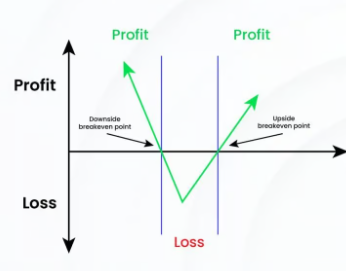
When an investor is optimistic about volatility but pessimistic about the market’s direction, they should consider employing the Strip Strategy. This involves purchasing two lots of “At-the-Money Put Options” and “At-the-Money Call Options.” Both options must have the same underlying security and expiration month. This strategy is similar to a bearish version of the common Long Straddle.
By using the Strip Strategy, investors have the potential for significant gains when the underlying security experiences a significant move at expiration, moving more favorably in the direction of loss.
8) Synthetic Put

An investor who sells stock short and purchases a call is employing a strategy that carries the same level of risk as buying a Put option. This Option Strategy effectively replicates a Long-Put Option by maintaining both a Short Stock position and a Long Call Option for the same stock. In essence, it provides investors with a tactical approach for expressing a bearish view on a stock while considering the potential for near-term strength in that stock.
Neutral Option Trading Strategies
Now, let us dive into the Neutral Option Trading Strategies here-
9) Long Straddles & Short Straddles
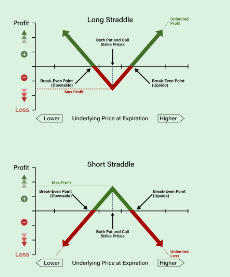
The Straddle strategy is a popular options trading approach in the Indian market. Long Straddle is unaffected by market movements and offers potential for profit and loss. It involves purchasing both a long call and a long put. Short Straddle is employed in less volatile markets, involving a Short Call and a Short Put. These strategies cater to different market sentiments and risk appetites, allowing traders to navigate the Indian market confidently and aim for higher returns.
Long Strangle is a neutral strategy using slightly OTM Put and Call Options with the same expiry date. It is used when anticipating high volatility and offers low risk and high payoff potential. Short Strangle is a variation aiming to increase profitability by widening breakeven points, requiring more change in the underlying stock. It involves selling two options simultaneously.
Intraday Option Trading Strategies
Here are the Top Intraday Option Trading Strategies.
10) Momentum Strategy
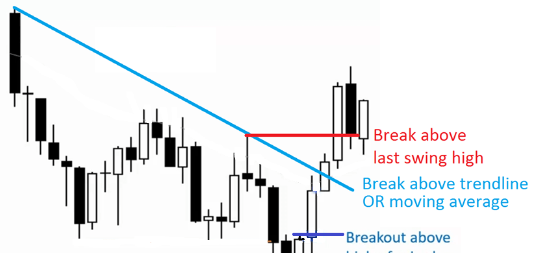
This Intraday Option Trading Strategy focuses on taking advantage of market momentum by choosing the right stocks before a significant market trend change. Traders then buy or sell securities based on market news, takeovers, earnings, and more. Intraday traders need to study important stock news and make quick buying or selling decisions. The duration of holding shares depends on market momentum. This strategy is considered the best option for intraday trading.
11) Breakout Strategy

When it comes to buying and selling securities on the same day, timing is undeniably one of the most critical factors. This intraday trading strategy involves identifying stocks that have broken out of their usual trading range.
Alternatively, a trader can pinpoint stocks that are on the verge of entering a new price range. In other words, traders must identify crucial points where share prices either increase or decrease. If the stock prices rise above the threshold point, intraday traders should seriously consider taking long positions and purchasing shares.
Conversely, if the stock prices plunge below the threshold point, it is an indication for individuals to contemplate taking short positions or selling shares.
12) Reversal Strategy

This trading strategy is linked to high risk, as it entails making investment decisions contrary to market trends, relying on thorough analysis and calculations. In comparison to other methods, intraday trading presents greater difficulty, requiring traders to possess deep knowledge of the market. Additionally, accurately pinpointing pullbacks and strengths can prove to be quite challenging.
13) Scalping Strategy

The scalping trading strategy is a highly effective approach to capitalize on small price changes and reap financial gains. This method is widely embraced by intraday traders who frequently engage in buying and selling commodities. Additionally, high-frequency traders often employ this technique to optimize their results.
It is important to emphasize that, in this particular case, the overall fundamental or technical setup holds minimal importance. Instead, the price action takes precedence when implementing the scalping strategy.
When selecting stocks, it is crucial for individuals pursuing this intraday trading strategy to choose shares that are both liquid and volatile. Moreover, it is essential to diligently place stop-loss orders for all trades to mitigate potential risks.
14) Moving Average Crossover Strategy

The moving average crossover strategy is another highly effective intraday trading strategy in India. It provides valuable insights into the momentum shifts of stocks and other financial instruments.
Essentially, when prices surpass or dip below the moving average, it acts as a strong signal for a change in momentum. When share prices surpass the moving average, it signifies an uptrend, while prices below the moving average indicate a downtrend.
During an uptrend, seasoned experts advise entering long positions or purchasing stocks. This enables traders to benefit from the upward momentum and maximize their gains. Conversely, during a downtrend, traders are recommended to enter short positions or sell their shares. This allows them to capitalize on the downward movement and secure profitable returns.
By utilizing the moving average crossover strategy, traders gain a competitive edge in the Indian intraday trading market. It empowers them to make well-informed decisions and optimize their trading activities for maximum profitability.
15) Gap and Go Strategy

The Gap and Go strategy revolves around identifying stocks that lack pre-market volume. These stocks open at a price that deviates from the previous day’s closing price, creating a gap. When a stock opens at a higher price than the previous day’s closing price, it is referred to as a gap up. Conversely, if the opening price is lower, it is called a gap down. Traders who employ this strategy search for such stocks and make purchases with the belief that the gap will be filled by the end of the trading day.
Conclusion
In this blog, we have thoroughly examined the most significant Option Trading Strategies. Our aim is to provide you with valuable insights that will enhance your understanding of these concepts. We assure you that by adopting these strategies, traders can effectively mitigate risks, replacing the usual high-risk perception surrounding options.
It is worth noting that even traders who harbor a fear of taking risks can significantly boost their overall returns through the strategic utilization of options. However, it is of utmost importance to fully grasp the associated risks of any investment. This understanding will empower you to make informed decisions, allowing you to assess whether the potential gains are truly justified.


